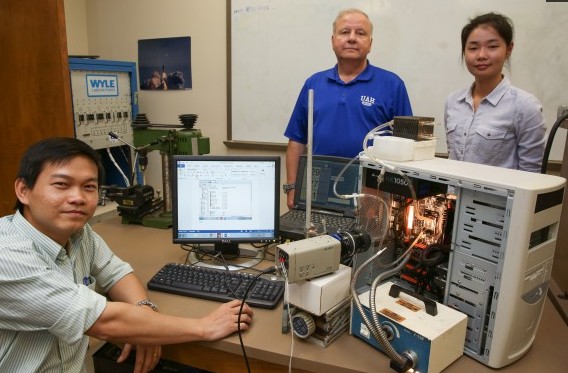Passive Solar Design Saves Power

If you ever wanted to save electricity and improve the comfort of your home without using any high-tech gadgets, then passive so design is the answer.� Passive solar design is a technique of using the sun to naturally heat and light up your home or office. This is achieved by using various building features and materials to improve heating and cooling efficiency...
If you ever wanted to save electricity and improve the comfort ofyour home without using any high-tech gadgets, then passive solardesign is the answer.
Passive solar design is a technique of using thesun to naturally heat and light up your home or office. This isachieved by using various building features and materials to improveheating and cooling efficiency. The best part about passive solardesign is that it is relatively simple to implement, little maintenanceis needed, and your home's market value can increase considerably.
Your home's passive solar potential is determined by where and howit is situated and by the types of windows and materials used. Althoughmost buildings can be optimized to receive the ideal amount ofsunshine, it is easier if they are on flat land or a sun-facing slope.If your home is surrounded by many trees, make sure they are deciduousso that they shade your home in summer, but their bare branches letsunlight through in winter. Also, try avoid nearby buildings thatcreate too much shade.
When constructing a new home, make sure it is built so that thelength of the house faces the sun, allowing the maximum amount ofsunlight. Also note how the size, shape and placement of windows willdetermine the amount of natural heat and light in your home.
So how does the sun heat your home? There are three ways:
- Direct gain - direct heat from the sun shining on a surface.
- Indirect gain - radiated heat from objects heated by the sun.
- Isolated gain - determined by the airflow in your home.
To ensure the most natural heat from the above three sources, anumber of large windows should be placed on the sun-facing side of yourhome, allowing maximum sunlight in.
All that sunlight and heat in your home is useless, if it cannot bestored and used when the sun is set. The solution is to useheat-absorbent flooring and walls that carry on radiating heat longinto the night. A simple way to reduce power cost in winter is tolocate to rooms in your house that get the most sunshine at certaintimes of day.� Also, shady rooms should be cut-off (their doors closed)from the rest of the house to retain heat better.
During summer, the right length roof overhangs or eaves can be usedto control the amount sunlight and heat in your home.�� The eavesshould be wide enough shade out the intense midday sun, but let the letlow-angle sunlight through during dusk and dawn to light up and warmthe home.� Again, the right trees and shrubs can be planted to regulatethe house's seasonal exposure to the sun.
For current buildings, the simplest passive solar design solution isto replace your windows with modern ones, that use various methods tostore up 50% more heat. Although they are 10% to 15% more expensive,they pay for themselves in the long-term from all the power saved toheat your home.
Double-glazed or Low-emissivity (Low-E) windows let solar heat in,but keep in the indoor radiant heat. Another way to reduce heat loss isto ensure tight seals around all windows or by using multiple panesthat have gaps between them filled with argon or krypton gas.
What your windows are made from can make a big difference too. Whilemetal framed windows generally conduct heat out the house, wood, vinyland fiberglass frames insulate the heat better.� Always ensure anymodern windows bought have labels issued by Energy Star or the NationalFenestration Rating Council.� These labels provide statistics on howeffective and efficient the windows are at retaining heat, which helpsyou purchase the right windows for your conditions and budget.
So you can see, passive solar design is the effective use of natureand physics to maximize the use of the sun's natural lighting andheat.� Always remember, the point of solar passive design is to reduceyour electricity usage and bills. So it is recommended to always weighup the costs against the potential power savings when installing anypassive solar solution at home.




Belum ada Komentar untuk "Passive Solar Design Saves Power"
Posting Komentar